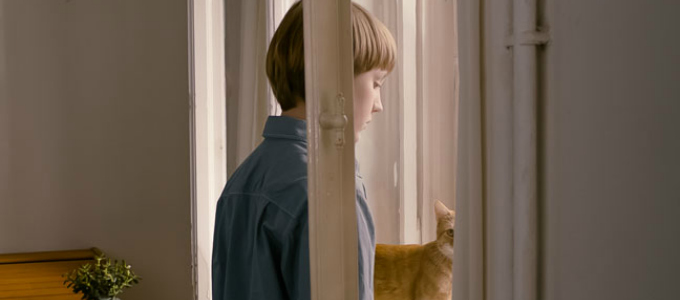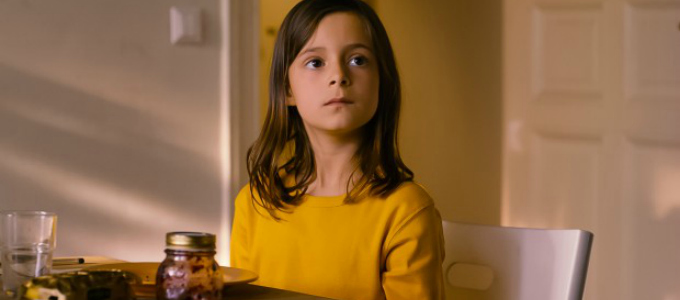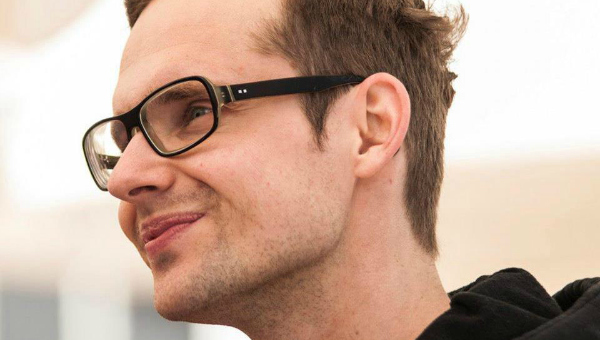 DAS MERKWÜRDIGE KÄTZCHEN, or THE STRANGE LITTLE CAT to give it its English title, is the first feature film from Swiss born German director, Ramon Zürcher. Whilst having screened at both the Toronto International Film Festival and the Berlinale, the screening at the 33rd Cambridge Film Festival marked its UK premiere.
DAS MERKWÜRDIGE KÄTZCHEN, or THE STRANGE LITTLE CAT to give it its English title, is the first feature film from Swiss born German director, Ramon Zürcher. Whilst having screened at both the Toronto International Film Festival and the Berlinale, the screening at the 33rd Cambridge Film Festival marked its UK premiere.
Toby Miller: When I’m making notes during a film I’m invariably scribbling down references to other movies: “this bit reminds me of…” that sort of thing. But with STRANGE LITTLE CAT my notes had instead scribbled mentions of “Steve Reich” and “Pina Bausch”. The film felt almost miraculous to me, a technical showcase that was full of character and not weighted down by its complex execution. Would you be able to tell me how the idea came about?
Ramon Zürcher: I knew I wanted to work with choreography and the space, and that I wanted to use the audio/visual medium in a way similar to music. For me the movement and rhythm is important. I wasn’t interested that much in traditional storytelling, but rather to use the visual media as a layer or as a membrane or to tell a simple plot or a story.
… I wanted to make a ballet of every day life …
I wanted to highlight the things that interest me – all those little banalities of the everyday life – I wanted to use them and make a ballet of every day life, just staying in the flat, where the characters can just become a complex without having to be a slave to a story. I think the complexity and the strangeness of the movie is because of that, because there is deliberately no real story that holds it all together.
 TM: The film is highlighting moments that would normally pass everybody by, but it’s not doing so in a way that makes them feel like significant losses. It actually begins to feel a little like you’re watching rats in a maze but with a lack of the mocking judgement that suggests. Would that be fair?
TM: The film is highlighting moments that would normally pass everybody by, but it’s not doing so in a way that makes them feel like significant losses. It actually begins to feel a little like you’re watching rats in a maze but with a lack of the mocking judgement that suggests. Would that be fair?
RZ: Yes, but for me it is also like watching molecules dancing; or possibly a dance of rats. Actually I didn’t set out to make a surrealist film, but the surrealism comes when you take things of the everyday life and change them so that they become different; then you don’t have the confidence of them. My basic interest is to take things from the everyday life but alter them in a very small way so that when you watch them you seem to be seeing with new eyes, to be seeing them afresh. You notice things from the everyday life that you otherwise may not have noticed.
TM: It reminds me of John Cage and his 4.33 piece. By framing the ordinary so cinematically it becomes remarkable. How long did the film take to make, the movements of the characters and the camera are so careful you could almost believe it is animated. It has the perfection of movement you might expect from a Pixar film.
… the essential rhythm of the film was carefully planned before the shooting.
RZ: During the script writing I already knew which objects and which physical actions were going to be needed in the film, so I was able to plan around that: where do the characters walk, when will they cross the frame; I knew when people would be off-camera and when they would be on screen. When I wrote the script everything that happened off screen was written in black, whilst everything that was going to be on screen and visible was written in green. So the world of the flat was carefully orchestrated before the film was shot. Then the Director of Photography created the whole flat in a software program, which we filled with digital furniture and characters. We were then able to transfer the whole script into a computer storyboard using this model, and that is why we didn’t have to look for character choreography during the shooting. We could simply use the plans we had developed beforehand. Actually, all the movement, the essential rhythm of the film, was carefully planned before the shooting.
TM: If the shooting was planned to that degree, how much of the film did you find in the editing?
RZ: Some of the rhythm I did find during the post-production and editing, but I was also aware that we didn’t have that much footage to cut with. We worked very hard to make sure that much of the rhythm I wanted was already in the shots. The first cut of the film was about 110 minutes, which I thought was too long. I knew audiences couldn’t have watched the film at that length without losing their patience, so I cut from the start and the end of the shots. I was then actually looking to restore some of the rhythm that was lost in making those cuts.
Since Cambridge, THE STRANGE LITTLE CAT has gone on to be screened at various other festivals as well as being exhibited theatrically within its home country. Click here for a list of screenings in Germany in Spring.
httpvh://www.youtube.com/watch?v=eL-U3goNMCk


One thought on “Interview with Ramon Zürcher”
Comments are closed.